“Easy Ways To Use Tithonia In Your Flower Arrangements”

Introduction to Tithonia
Tithonia, a genus of the sunflower family, is a gem in the gardening world. This plant offers beauty and benefits that make it a must in any garden. Explore varieties, ideal growing conditions, and the ways it can enhance your oasis.
The Beauty and Benefits of Tithonia
Tithonia, referred to as the “Mexican Sunflower”. It is known for its daisy-like flowers that range in color from deep orange to vivid yellow. These bold and beautiful blooms not only captivate the eye. They also attract an array of pollinators, including butterflies, hummingbirds, and bees. Tithonia plants offer benefits to gardeners and the surrounding ecosystem. They thrive in a variety of climates and need minimal maintenance. They are an excellent choice for experienced and novice gardeners.
Why Tithonia is a Must-Have in Your Garden
Tithonia’s versatility and low maintenance make it a good addition to any garden. The Tithonia can integrate into your landscape and elevate its beauty. Its fast-growing, resistance to pests and diseases makes it a reliable plant to cultivate.
Understanding Tithonia Varieties
There are two primary varieties that stand out in the gardening world. The Tithonia Rotundifolia (the common Mexican Sunflower) and Tithonia Diversifolia (the Tree Marigold). Each offers unique features and characteristics that contribute to their individual appeal.
Tithonia Rotundifolia: The Common Mexican Sunflower
The Tithonia Rotundifolia is the more grown variety. It is known for its daisy-like flowers that can reach up to 6 inches in diameter. They appear in shades of orange and yellow. The Tithonia Rotundifolia has tall, branching stems that can reach 6 feet in height. Tithonia Rotundifolia is an annual plant.
Tithonia Diversifolia: The Tree Marigold
The Tithonia Diversifolia, or the Tree Marigold, is a perennial plant. It can reach heights of up to 15 feet. This variety still boasts the iconic Tithonia flowers. Their flowers are smaller in size compared to Tithonia Rotundifolia. Tithonia Diversifolia is a native of Mexico and Central America. It is a fast-growing, drought-tolerant hedge or screen.
Ideal Growing Conditions for Tithonia
It’s essential to understand their preferred growing conditions. From climate preferences to soil requirements, let’s explore the key factors.
Climate Preferences: Where Tithonia Thrives
Tithonia plants are native to warm, tropical, and subtropical regions. They are well-suited for cultivation in USDA Hardiness Zones 8-11. These plants thrive in areas with long, warm summers and mild winters. The Tithonia Rotundifolia and Tithonia Diversifolia is grown in a range of climates. They are adaptable and versatile plant options.
Soil Requirements: Finding the Perfect Medium
Tithonia plants are adaptable when it comes to soil. They have a few preferences to keep in mind. They prefer well-draining, nutrient-rich soil. The ideal soil is slightly acidic to neutral in pH with a range of 6.0 to 7.0. Tithonia thrives in loamy or sandy-loam soils that are high in organic matter. Avoid heavy, clay-based soils, as they lead to waterlogged conditions and increased root rot.
Sunlight Needs: Maximizing Bloom Potential
Tithonia plants are sun-lovers, requiring at least 6-8 hours of direct sunlight per day. In areas with cooler or shorter growing seasons more sunlight can be beneficial. It encourages the plants to produce more flowers and reach their optimal height and size. Partial shade can result in a reduction in flower production and plant vigor.
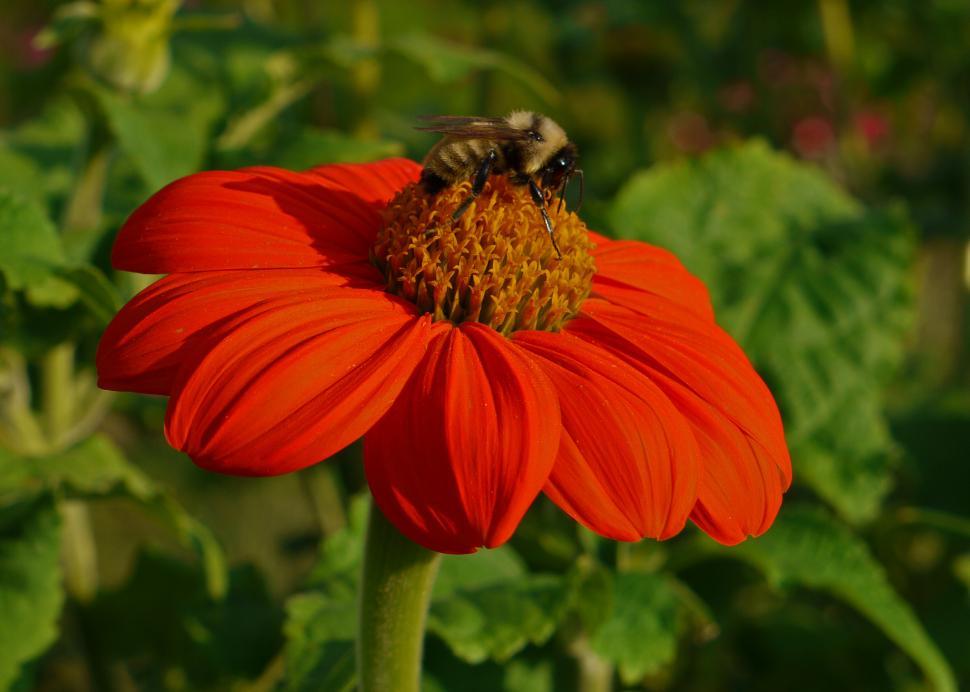
Starting Tithonia from Seeds
Introduce Tithonia to your garden by starting them from seeds. This allows you to customize your plant selection and get a head start on the growing season.
Selecting High-Quality Seeds
Look for seeds that are plump, uniform in size, and free of any visible damage or blemishes. High-quality Tithonia seeds have a higher germination rate, ensuring a successful start.
Prepping Seeds for Successful Germination
It’s recommended to pre-soak seeds in water for 12-24 hours before sowing. This step can help to soften the seed coat and kick-start the germination process. You can scarify the seeds by rubbing them between two pieces of sandpaper. Try nicking the seed coat with a knife, which also improves germination rates.
Sowing Seeds Indoors vs. Outdoors
Tithonia seeds can be started either indoors or sown in the garden. For a head start on the season, sow the seeds indoors 6-8 weeks before your last expected frost date. This allows the seedlings to develop a strong root system before transplanting. You can direct sow the seeds outdoors once the soil has warmed up and the danger of frost has passed.
Ideal Conditions for Seed Germination
Tithonia seeds thrive in warm, moist environments. Remember this when sowing your seeds indoors. Use a seed starting mix and keep the soil moist, but not waterlogged. Provide warmth by using a heat mat or place them in a warm location. Ensure the seeds receive at least 6 hours of sunlight or supplemental grow lights per day. Outdoor sowing can be done in the garden. The natural warmth and moisture of the soil will trigger germination.
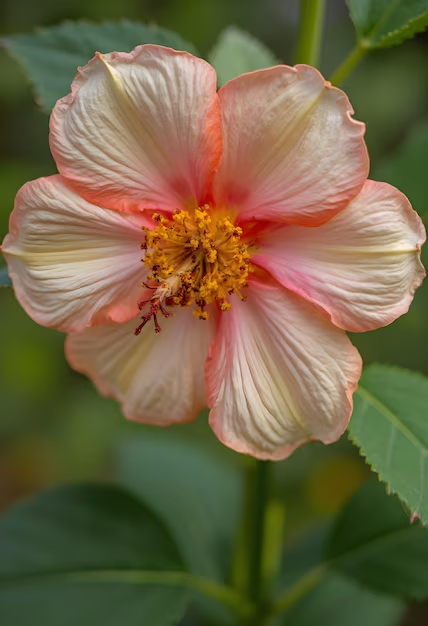
Transplanting Tithonia Seedlings
Once your seeds have germinated and the seedlings have developed a few sets of true leaves. Consider transplanting them into their permanent growing locations.
Recognizing When to Transplant
The time to transplant seedlings is when they are approximately 4-6 inches tall. Make sure they have developed a well-established root system. This occurs 4-6 weeks after sowing the seeds indoors. If direct sowing, you can transplant the seedlings once they have their first set of true leaves.
Hardening Off Seedlings for Outdoor Life
Before transplanting your seedlings, it’s essential to “harden them off”. It is a process that prepares them for the outdoor environment. Start by placing the seedlings in a shaded, sheltered area for a few hours each day. Increase their exposure to sunlight and wind over the course of 7-10 days. This helps the plants develop a thicker cuticle and stronger stems. This will make them more resilient to the stresses of transplanting.
Best Practices for Transplanting
Choose a cloudy day or late afternoon to reduce stress on the plants. Lift the seedlings from their containers, taking care to preserve the root ball. Dig a hole in the prepared garden bed that is larger than the root ball. Place the seedling in the hole, making sure the top of the root ball is level with the surrounding soil. Firm the soil around the base of the plant and water to settle the roots.
Direct Sowing Tithonia in the Garden
Advantages of Direct Sowing
Direct sowing Tithonia seeds ends the need for transplanting. This also allows the plants to establish themselves in their permanent growing location. It reduces the risk of transplant shock or interruptions to their growth cycle. Direct sowing can result in a more natural, free-flowing appearance in the garden.
Timing Your Sowing for Best Results
The optimal time to direct sow seeds in the garden is after the last expected frost. This is usually in late spring or early summer, depending on your climate. Avoid sowing the seeds too early. Cold, damp soil can inhibit germination and lead to poor seedling establishment.
Tips for Spacing and Placement
When direct sowing Tithonia. Aim to space the seeds 12-18 inches apart to allow for proper growth and air circulation. Spacing will prevent the plants from becoming overcrowded and competing for resources. Plant in clusters or groups for a more natural, informal look, or in rows for a more formal garden design.
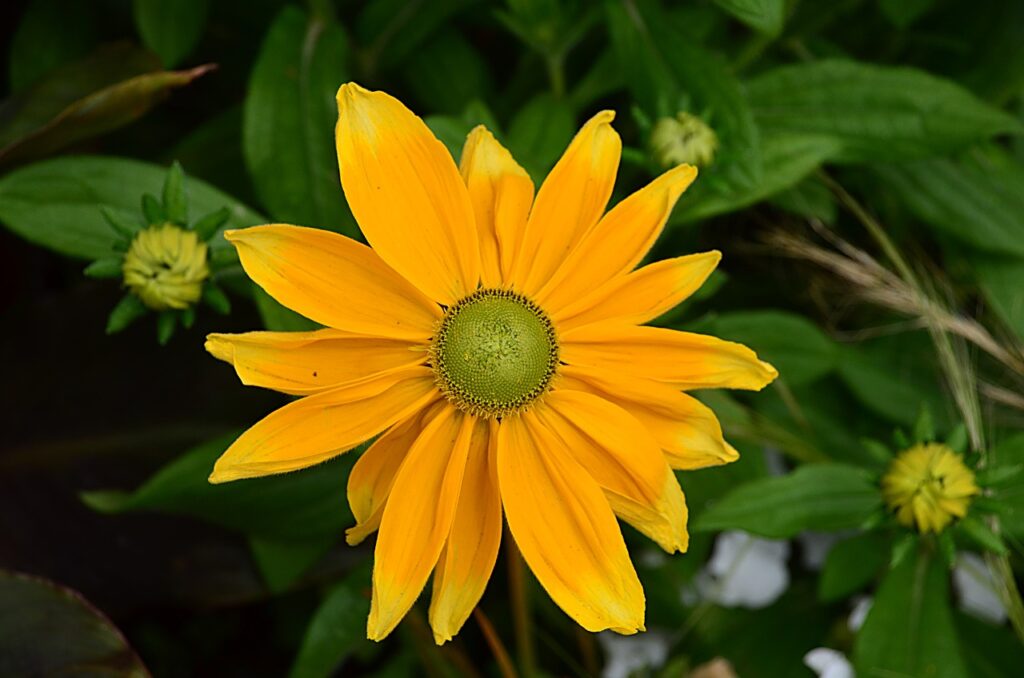
Watering Techniques for Healthy Tithonia Growth
Understanding Tithonia’s Watering Needs
Tithonia plants are drought-tolerant, but they do need consistent moisture. Keep moist during the establishment phase and periods of active growth and flowering. Aim to keep the soil moist, and avoid overwatering. Wet soil can lead to issues such as root rot and fungal diseases.
How to Avoid Overwatering and Root Rot
Be mindful of the soil’s moisture levels and adjust your watering schedule. Allow the top inch or two of soil to dry out between waterings. Avoid letting the plants sit in waterlogged conditions. If you notice signs of root rot immediately reduce watering and improve drainage.
Signs of Underwatering to Watch For
Tithonia plants can start to exhibit signs of stress. The signs are wilting, curling, or discolored leaves. It may be a sign that they are not receiving enough water. Provide a deep, thorough watering to saturate the soil and revive the plant.
Fertilizing Tithonia for Vibrant Blooms
Choosing the Right Fertilizer: Organic vs. Synthetic
Tithonia plants can thrive with either organic or synthetic fertilizers. Organic options provide a slow release of nutrients. Synthetic fertilizers can be beneficial for plants. They offer a more concentrated and immediate boost of nutrients.
When and How to Fertilize Tithonia
The best time to fertilize Tithonia plants is in the spring. Apply the fertilizer around the base of the plant. Be careful not to come into direct contact with the stems or foliage. Apply fertilizer every 4-6 weeks during the growing season to maintain nutrient levels.
Identifying Nutrient Deficiencies
Tithonia plants that exhibit signs of nutrient deficiency should be addressed. The signs of stunted growth, yellowing or discolored leaves, or poor flower production. Observe the plants to identify the specific nutrient that is lacking.
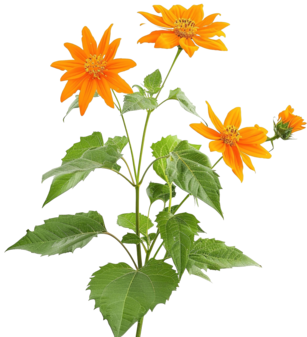
Pest and Disease Management
Tithonia plants are susceptible to certain pests and diseases. Monitoring and the use of organic methods can help keep your plants healthy.
Common Pests That Affect Tithonia
Tithonia plants attract pests, including aphids, spider mites, leaf-feeding beetles, and caterpillars. These pests can do damage to the leaves, flowers, and stems of the plants.
Organic Methods for Pest Control
It’s best to opt for organic control methods. Using insecticidal soaps, neem oil, or beneficial insects to control the pest population. Beneficial insects like ladybugs or lacewings are helpful. Maintaining good garden hygiene can help deter pests from taking up home.
Recognizing and Treating Common Diseases
Tithonia plants may be affected by fungal diseases, such as powdery mildew or leaf spot. Identify them by the white, powdery growth on the leaves or discolored, spotty foliage. Use a fungicide formulated for organic gardening. Ensure proper air circulation and soil drainage to prevent the spread of disease.
Care and Maintenance Throughout the Growing Season
Keep your Tithonia plants healthy by pruning, deadheading, mulching, and seasonal adjustments.
Pruning and Deadheading for Continuous Blooms
To encourage blooming and a bushier, compact growth habit, deadhead spent Tithonia flowers. This simple task involves removing the faded blooms. Deadheading prevents the plant from focusing its energy on seed production. It redirects energy toward new flower development. You can prune back leggy or overgrown stems to maintain a tidy, attractive appearance.
The Benefits of Mulching Around Tithonia
Applying a 2-3 inch layer of organic mulch around the base of your plants can provide benefits. Mulch keep soil moisture, suppresses weed growth, and insulates the roots. As the mulch breaks down, it adds valuable nutrients to the soil.
Seasonal Care Tips to Ensure Healthy Growth
Where Tithonia is grown as an annual, you may need to take extra steps to prepare the plants for the winter months. In the fall, cut back the plants to a few inches above the ground, and apply a thick layer of mulch to protect the roots. For perennial Tithonia varieties, such as Tithonia Diversifolia. Prune back any dead or damaged growth in the spring to encourage new, healthy growth.
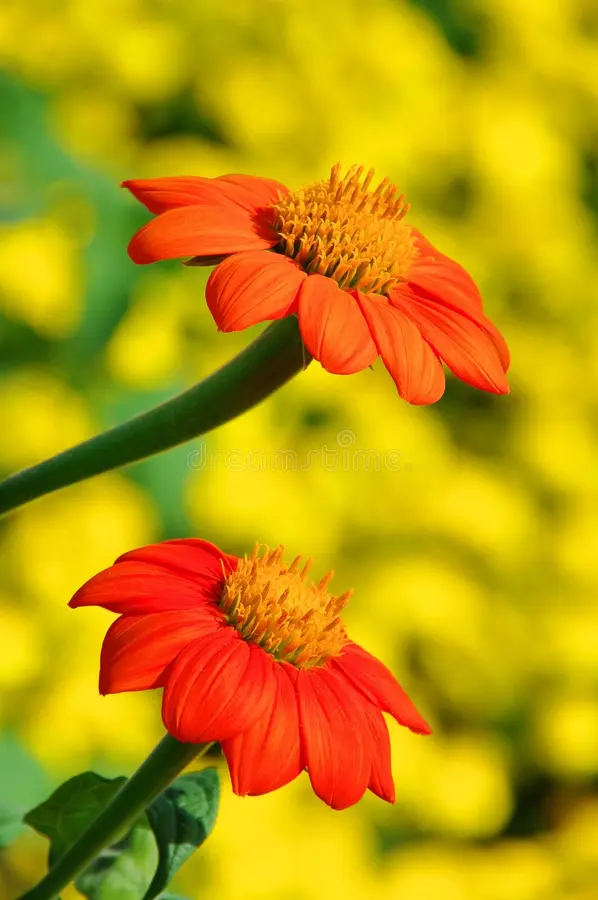
Harvesting Tithonia
Techniques for Long-Lasting Floral Arrangements
To maximize the vase life of your Tithonia flowers, follow a few simple steps. Submerge the flower stems in cool water and allow them to condition for several hours. When arranging consider using a floral preservative in the water. The preservative will extend the lifespan of the blooms. Tithonia flowers also pair well with other long-lasting cut flowers. Create stunning, vibrant bouquets using zinnias and sunflowers.
Best Practices for Drying Tithonia Flowers
Tithonia flowers can be dried for use in long-lasting, year-round crafts and decor. Hang them upside down in a cool, dry, well-ventilated area, away from direct sunlight. Once the flowers are completely dry and brittle, remove the petals. Use them in dried flower projects, from wreaths and garlands to potpourri and artwork.
Troubleshooting Common Issues
What to Do If Your Tithonia Isn’t Blooming
If your Tithonia plants are not producing the number of flowers they should. Ensure that the plants are receiving adequate sunlight. Tithonia requires at least 6-8 hours of direct sun per day to thrive. Check that the soil is well-draining and is receiving consistent moisture. Proper fertilization is important; consider adjusting your feeding regimen.
Addressing Stunted Growth in Tithonia Plants
What to do if your Tithonia plants appear stunted or are not their typical height and size. There may be issues with the soil, water, or nutrient levels. Examine the soil for compaction or poor drainage, and amend it as needed. Ensure that the plants are receiving the appropriate amount of water. Underwatering and overwatering can stunt plant growth. Review your fertilization practices and supplement with a balanced, slow-release fertilizer.
Expanding Your Tithonia Collection
Propagation Techniques: Growing from Cuttings
You can propagate your Tithonia plants by taking stem cuttings. This allows you to create identical clones of your favorite Tithonia varieties. You can enjoy their specific traits and characteristics year after year. Take a 4-6 inch stem cutting, and remove the lower leaves. , and place it in a well-draining potting mix or rooting medium to develop a new root system.
Tips for Collecting and Saving Tithonia Seeds
Allow the flowers to mature and the seed heads to dry on the plant. Remove the seeds and store them in a cool, dry place until you’re ready to sow them. Seed saving ensures that you have a supply of your beloved Tithonia varieties for years to come.
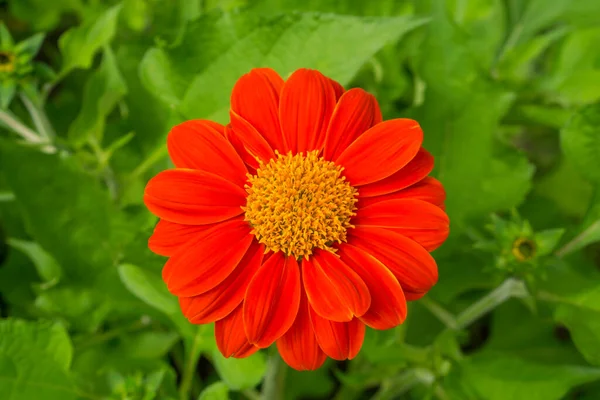
Conclusion
Tithonia’s captivating blooms, diverse varieties, and easy-to-grow nature, are a true gem. The versatility of this remarkable plant knows no bounds. Use it for border plantings to cut flower arrangements. This guide will help you unlock the full potential of Tithonia. Create a stunning, thriving garden that will be the envy of all your neighbors.